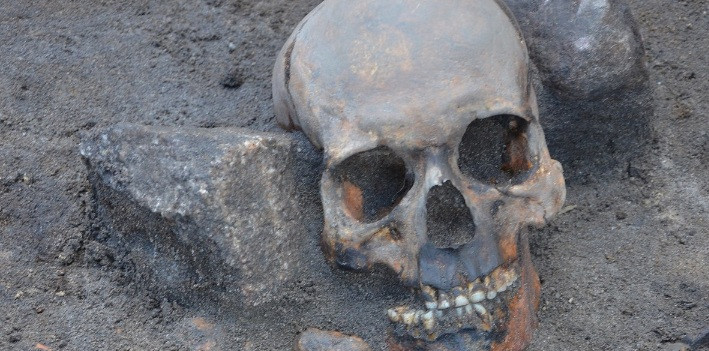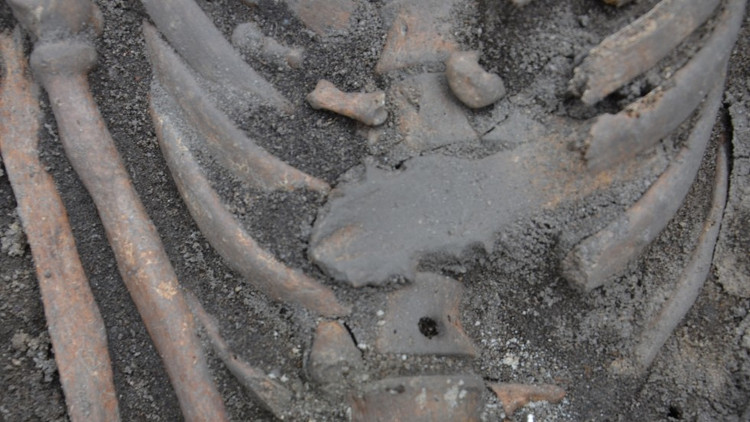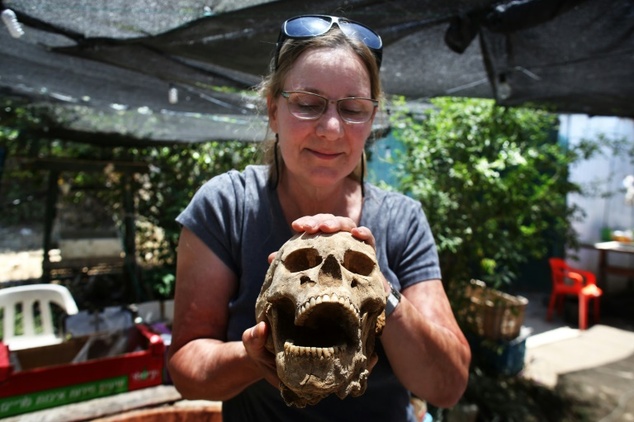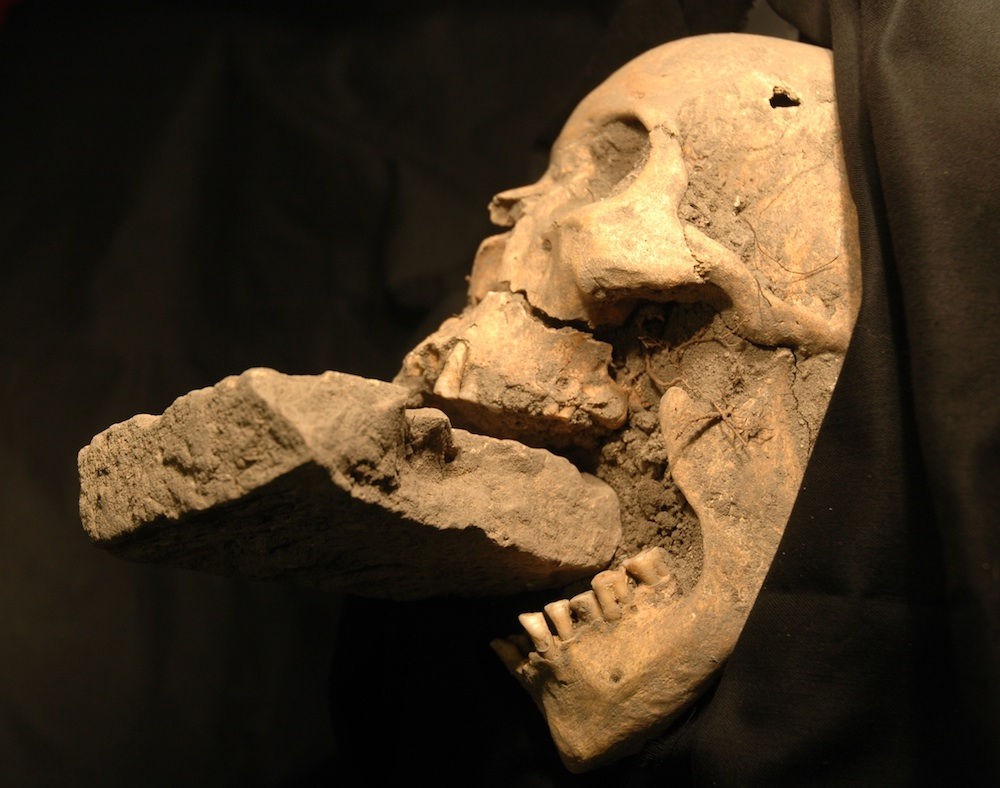Three new sets of remains discovered by Polish archaeologists were all nailed to the spine, apparently to avoid the dead from “rising from their graves”.
According to the Seeker website, these remains were buried in the Middle Ages, around the 13th and 14th centuries in the village of Gorzyca, western Poland.
 The man was buried with two large rocks placed next to his head.
The man was buried with two large rocks placed next to his head.
“These remains were found near the residence of a former bishop. There is a Gothic church in this area,” Krzysztof Socha from the Kostrzyn Fortress Museum in Poland told Seeker.
The two remains, of a man and woman, showed different signs of being tortured by sharp objects.
Both sets of remains had holes in their spines, as if they had been crucified. All remains are buried face down in the ground, a ritual to avoid rising from the grave.
According to Polish archaeologists, the woman seemed to be hunchbacked and this scared the surrounding community. After her death, she was considered a threat. This woman’s knee was also broken.
Examination results of the man’s skeleton also found signs that he was hunchbacked. The remains were dismembered and decapitated.
 The spine shows signs of being crucified.
The spine shows signs of being crucified.
The third skeleton belongs to a male about 30-35 years old. This person was buried with his head stuck between two rocks. A hole in the spine showed that the man was pinned to the ground.
“The remains are quite intact and show no signs of disease,” Socha said.

Traditionally, placing stones in a grave indicates a special burial ritual. Some people believe that supposed “vampires” in the Middle Ages were often buried with bricks in their mouths, nailed to the ground, and sometimes decapitated with their remains dismembered.
The three sets of remains were transferred to Polish anthropologists for further examination. The results will be announced soon as soon as the investigation is finished, Socha said.






